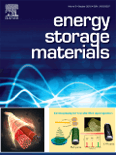
Energy Storage Materials
Scope & Guideline
Advancing sustainable solutions for a brighter energy future.
Introduction
Aims and Scopes
- Energy Storage Materials and Technologies:
The journal covers a wide range of materials used in energy storage systems, including batteries, supercapacitors, and hybrid devices. It emphasizes the development of novel materials that improve energy density, efficiency, and cycling stability. - Electrochemical Mechanisms and Performance Optimization:
Research articles often explore the electrochemical processes involved in energy storage, focusing on optimizing performance through novel material designs, interfaces, and electrolyte compositions. - Sustainable and Green Energy Storage Solutions:
A significant focus is placed on environmentally friendly materials and processes, including recyclable and biodegradable materials, to support the transition to sustainable energy systems. - Advanced Characterization Techniques:
The journal encourages the use of cutting-edge characterization techniques to gain insights into the structural, electrochemical, and mechanical properties of energy storage materials, facilitating the understanding of their performance. - Interface Engineering and Stability:
Research on improving the stability of electrode/electrolyte interfaces is prevalent, addressing challenges such as dendrite formation, side reactions, and capacity fading in various battery systems.
Trending and Emerging
- Hybrid and Multifunctional Materials:
There is a growing emphasis on developing hybrid materials that combine different functionalities, such as high conductivity, mechanical flexibility, and electrochemical stability, to enhance the performance of energy storage devices. - Solid-State Battery Technologies:
Research on solid-state batteries is rapidly gaining traction, with a focus on improving ionic conductivity and interface stability to achieve high energy densities and safety. - Advanced Computational and Machine Learning Approaches:
The integration of computational methods and machine learning techniques for material design and optimization is trending, allowing for faster discovery of new materials and enhanced battery performance. - Next-Generation Battery Chemistries:
There is a notable increase in research on alternative battery chemistries, such as sodium-ion, potassium-ion, and multivalent metal batteries, which are seen as viable replacements for conventional lithium-ion systems. - Interfacial and Surface Engineering:
Research focusing on the design and engineering of interfaces and surfaces to enhance battery performance is emerging as a critical area, addressing issues such as dendrite growth and interfacial stability.
Declining or Waning
- Conventional Lithium-Ion Battery Research:
As the field evolves, there is a decreasing emphasis on traditional lithium-ion battery technologies, with researchers increasingly exploring alternatives such as sodium-ion, potassium-ion, and magnesium-ion batteries. - Basic Electrochemical Studies:
There is a waning interest in fundamental electrochemical studies that do not directly translate into practical applications. The focus is shifting towards applied research that addresses specific performance issues in energy storage systems. - Single Material Focus:
Research that concentrates solely on individual materials without considering composite systems or hybrid approaches is declining, as the development of multifunctional materials is increasingly favored. - Thermal Management Strategies:
The exploration of thermal management in energy storage systems is becoming less prominent, as advancements in materials and battery designs are addressing thermal issues inherently. - Conventional Recycling Methods:
Traditional recycling methods for energy storage materials are receiving less attention, as newer, more sustainable recycling technologies and processes are being developed.
Similar Journals
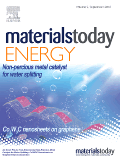
Materials Today Energy
Advancing Sustainable Solutions for Tomorrow's Energy NeedsMaterials Today Energy is a premier journal published by Elsevier, focusing on the interdisciplinary field of energy materials. With an ISSN of 2468-6069, the journal is renowned for its impactful research as evidenced by its impressive Q1 quartile rankings in multiple categories including Energy Engineering and Power Technology, Fuel Technology, and Renewable Energy. It stands out with strong Scopus rankings, highlighting its significance in the respective research communities, such as being ranked 3rd in Nuclear Energy and Engineering. Established from 2016 to 2024, the journal aims to provide a platform for innovative research that addresses the global demands for sustainable energy solutions. Although it is not open access, Materials Today Energy is accessible to a broad audience, encouraging collaborations among researchers, professionals, and students in the pursuit of advancing materials science and energy technologies. This makes it an essential resource for those looking to remain at the forefront of discoveries that shape the future of energy.
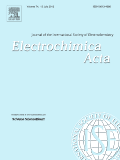
ELECTROCHIMICA ACTA
Connecting Scholars to the Heart of Electrochemical InnovationELECTROCHIMICA ACTA is a prestigious academic journal dedicated to the field of electrochemistry and chemical engineering. Published by PERGAMON-ELSEVIER SCIENCE LTD, this journal stands out with its impressive impact factor and is categorized in the top quartile (Q1) for both Chemical Engineering and Electrochemistry in 2023, further cementing its role as a leading venue for cutting-edge research. With a publication history dating back to 1959 and converging into 2024, it has established a substantial archive of influential articles that explore various aspects of electrochemical processes, materials, and applications. Researchers and professionals in the field benefit from the journal’s high visibility, as it ranks remarkably well according to Scopus metrics, with a position in the 90th percentile for General Chemical Engineering and 84th percentile for Electrochemistry. Although ELECTROCHIMICA ACTA does not currently offer open access, it continues to serve as a vital resource for those seeking to expand their knowledge and explore innovative developments in electrochemical science.
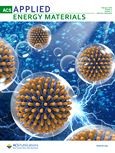
ACS Applied Energy Materials
Unleashing Potential in Energy TechnologiesACS Applied Energy Materials, published by the American Chemical Society, is a premier journal dedicated to the cutting-edge fields of energy materials, chemical engineering, and electrochemistry. With an impressive impact factor and consistently ranked in the Q1 category across multiple disciplines—including Chemical Engineering, Electrical and Electronic Engineering, and Materials Chemistry—this journal serves as a pivotal platform for researchers and professionals focused on innovative solutions for energy systems and materials science. Since its inception in 2018, ACS Applied Energy Materials has been committed to disseminating high-quality research that addresses pressing energy challenges, promoting sustainability and efficiency in various applications. Its competitive Scopus rankings reflect the journal's influence and relevance within the academic community, making it an essential resource for anyone looking to stay at the forefront of energy materials research.

Journal of Energy Storage
Advancing energy solutions for a sustainable future.Welcome to the Journal of Energy Storage, a premier publication dedicated to advancing the science and technology of energy storage systems. Published by ELSEVIER in the Netherlands, this esteemed journal boasts a significant impact in the field, categorized as Q1 in Electrical and Electronic Engineering, Energy Engineering and Power Technology, and Renewable Energy, Sustainability and the Environment for 2023. With a commitment to disseminating high-quality research, the journal provides a platform for the latest innovations and findings, covering a broad spectrum of topics from battery technologies to thermal energy storage. As a must-read for researchers, professionals, and students alike, the Journal of Energy Storage facilitates vital discussions that shape the future of sustainable energy practices. While presently offering select access options, the journal continues to expand its reach and influence within the academic community, encouraging submissions that drive forward our understanding of energy solutions. Discover the forefront of energy storage research and contribute to a world increasingly reliant on efficient energy management.
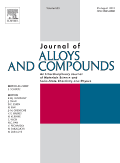
Journal of Alloys and Compounds
Advancing the Frontier of Materials ResearchJournal of Alloys and Compounds, published by Elsevier Science SA, stands at the forefront of materials research, focusing on the properties, applications, and innovations within alloys and compounds. With an impressive impact factor and prestigious rankings placing it in the Q1 quartile across multiple related categories—including Materials Chemistry, Mechanical Engineering, and Mechanics of Materials—this journal is recognized for its significant contributions to the field. Researchers and professionals engaged in metallurgy, materials science, and engineering will find it a critical resource that encompasses groundbreaking studies, insightful reviews, and essential findings. The journal has a strong influence, as evidenced by its Scopus rankings—ranking 14th in Metals and Alloys and 28th in Mechanics of Materials, indicating a robust global impact. As it continues to publish cutting-edge research from 1991 to 2024, the Journal of Alloys and Compounds serves as a vital platform for the exchange of knowledge, thereby advancing our understanding of complex materials and fostering innovation in diverse applications.
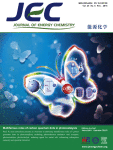
Journal of Energy Chemistry
Bridging Science and Sustainability in EnergyThe Journal of Energy Chemistry, published by Elsevier, is a premier international journal that has established itself at the forefront of research in the fields of electrochemistry and energy technology. With an impressive impact factor, this journal is classified in the Q1 quartile across multiple categories including Energy Engineering and Power Technology, Fuel Technology, and Electrochemistry, underscoring its significant contribution to advancing knowledge and innovation in energy systems. Based in the Netherlands, the journal offers open access to its cutting-edge research, allowing for broad dissemination and engagement among researchers, professionals, and students alike. The scope of the journal spans crucial topics from chemical energy storage to sustainable energy solutions, making it an essential resource for those looking to understand and contribute to the evolving landscape of energy chemistry.

Electrochemical Energy Reviews
Pioneering Insights in Energy Engineering and Material ScienceElectrochemical Energy Reviews, published by SpringerNature, serves as an essential platform for the dissemination of cutting-edge research in the fields of electrochemistry, material science, and energy engineering. With an impressive impact factor and ranked in the Q1 category across multiple disciplines including Chemical Engineering and Energy Technology, this journal highlights its commitment to advancing knowledge and innovation within the energy sector. Operating since 2018, the journal not only provides a valuable resource for researchers and professionals but also invites contributions from students and emerging scholars interested in the pivotal role of electrochemical processes in sustainable energy solutions. Published in Germany and widely accessible to the global research community, Electrochemical Energy Reviews is an indispensable reference for those keen on exploring the future of energy technologies.

Interdisciplinary Materials
Connecting Researchers to Transformative Materials InsightsInterdisciplinary Materials is a prominent Open Access journal published by Wiley, dedicated to advancing knowledge and innovation in the field of materials science. With an ISSN of 2767-4401 and an E-ISSN of 2767-441X, this journal seeks to foster interdisciplinary collaborations and promote high-quality research that bridges the gap between materials engineering, physics, chemistry, and emerging technologies. Established in 2022, it aims to provide free and unrestricted access to cutting-edge research findings, ensuring that pivotal discoveries reach a broad audience. Interdisciplinary Materials assesses submissions rigorously, aspiring to achieve high impact and relevance, catering to researchers, professionals, and students keen on exploring innovative materials and their applications. With its commitment to scientific excellence, this journal stands as a vital resource for those looking to stay abreast of the latest advancements in materials research.

Materials Today Sustainability
Connecting researchers to foster global sustainability efforts.Materials Today Sustainability is a leading journal in the interdisciplinary field of sustainable materials, published by ELSEVIER. With a strong commitment to advancing knowledge in sustainability and materials science, this journal encompasses a broad range of topics, including renewable energy innovations, sustainable engineering, and eco-friendly materials development. Achieving a prestigious Q1 ranking in 2023 across Chemistry (Miscellaneous), Materials Science (Miscellaneous), and Renewable Energy, this journal plays a crucial role in disseminating high-impact research that addresses global sustainability challenges. With an impressive Scopus ranking that positions it among the top journals in Chemistry, Materials Science, and Renewable Energy, Materials Today Sustainability is an invaluable resource for researchers, professionals, and students dedicated to driving forward the agenda of sustainability and material innovation. The journal is accessible through a robust open access model, ensuring the research reaches a global audience, facilitating collaboration and innovation in this critical field.

Energy & Environmental Materials
Empowering a Greener Future with Innovative DiscoveriesEnergy & Environmental Materials, published by WILEY, is an esteemed academic journal dedicated to pioneering research in the multifaceted domains of energy, environmental science, and materials science. Since its inception in 2018, this journal has rapidly established itself as a leading platform, holding a prestigious Q1 ranking across multiple categories including Renewable Energy, Sustainability, and Waste Management, reflecting its significant contributions to advancing knowledge in these critical areas. With a robust Scopus ranking that positions it in the top percentile for Environmental Science and Materials Science, it caters to a diverse audience of researchers, professionals, and students seeking cutting-edge findings and practical applications in energy efficiency and sustainable materials. This open-access journal facilitates the dissemination of innovative research and aims to bridge the gap between scientific exploration and real-world solutions for a sustainable future. The editorial team encourages submissions that explore both theoretical and practical aspects, ensuring that every publication not only contributes to the academic landscape but also drives impactful change in energy and environmental practices.